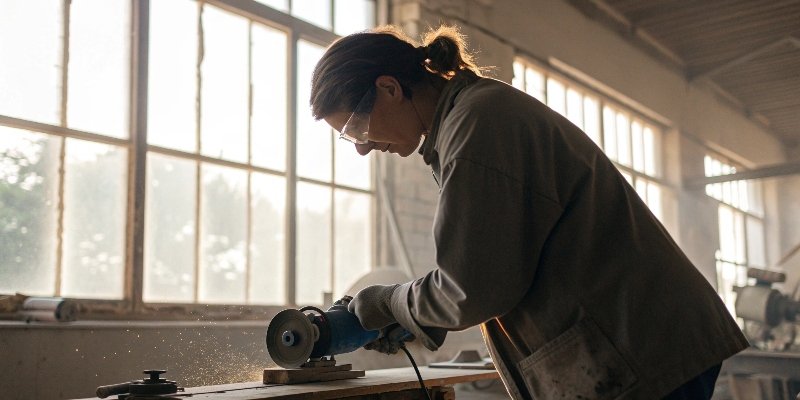
Struggling with parts failing due to hidden stress from grinding? This common issue causes cracks and reduces component life, costing you money. Low stress grinding provides a superior solution.
Low stress grinding is a precision process that minimizes heat and mechanical stress on a workpiece. It achieves an excellent surface finish and dimensional accuracy by using advanced techniques like precise temperature control and specialized wheels. This makes it perfect for high-strength, mission-critical components.
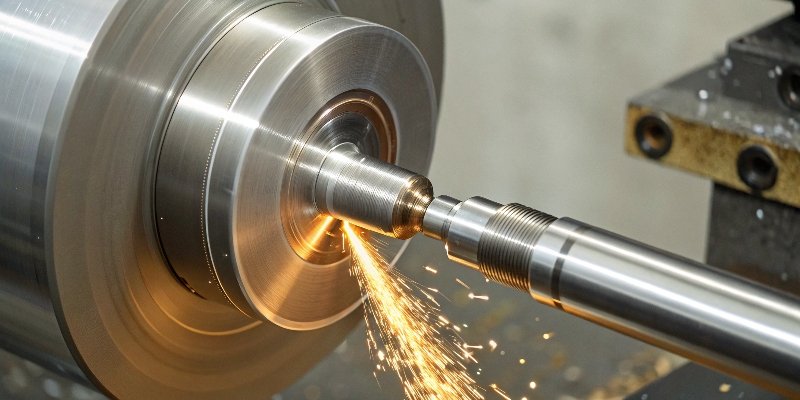
Understanding the theory is one thing, but seeing it in practice is another. Over our nearly 30 years in the grinding business here in Henan, we’ve seen how choosing the right grinding method can make or break a project. Low-stress grinding is not just a buzzword; it’s a specific set of techniques designed for the most demanding applications. But to truly grasp its value, you need to see how it compares to other common grinding methods1. Let’s break down the different types of grinding you’ll encounter, so you can make more informed decisions for your production line.
What are the four types of surface grinding?
Unsure which surface grinding method suits your needs? Choosing the wrong one can lead to wasted materials, time, and poor results. Knowing the four main types is key.
The four main types of surface grinding are categorized by spindle orientation and table movement. They are: horizontal spindle with a reciprocating table, horizontal spindle with a rotary table, vertical spindle with a reciprocating table, and vertical spindle with a rotary table. Each is for different part geometries.
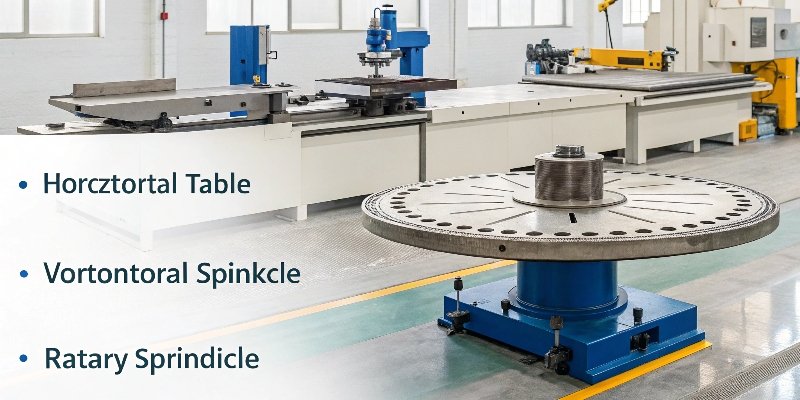
Each of a these four methods serves a distinct purpose, and choosing the right one directly impacts your efficiency and final product quality. As a factory that produces wheels for all of these applications, we help our clients select the perfect abrasive for their specific machine and process. The wheel’s periphery does the cutting in horizontal-spindle grinding, which is great for precision. In contrast, vertical-spindle grinding uses the face of the wheel, allowing for much higher material removal rates. The choice between a reciprocating (back-and-forth) or rotary table2 depends entirely on the shape of your workpiece. Long, flat parts are perfect for reciprocating table3s, while round, flat parts are best suited for rotary tables.
| Grinding Type | Spindle Axis | Table Motion | Best For |
|---|---|---|---|
| Type 1 | Horizontal | Reciprocating | Long, narrow flat surfaces |
| Type 2 | Horizontal | Rotary | Flat circular or annular surfaces |
| Type 3 | Vertical | Reciprocating | High stock removal on large flat surfaces |
| Type 4 | Vertical | Rotary | High-volume production of small parts |
Understanding this matrix is the first step in optimizing your grinding operations.
What is low stress training?
Have you heard the term "low stress training" and felt confused? You might find articles about plants, which is not helpful. Let’s clarify what this concept means in manufacturing.
In our industry, "low stress training" is not a formal technique. It refers to the essential operator skill needed to perform low-stress grinding. It’s about the expertise and precision required from the technician to manage the process and prevent stress in the final workpiece.
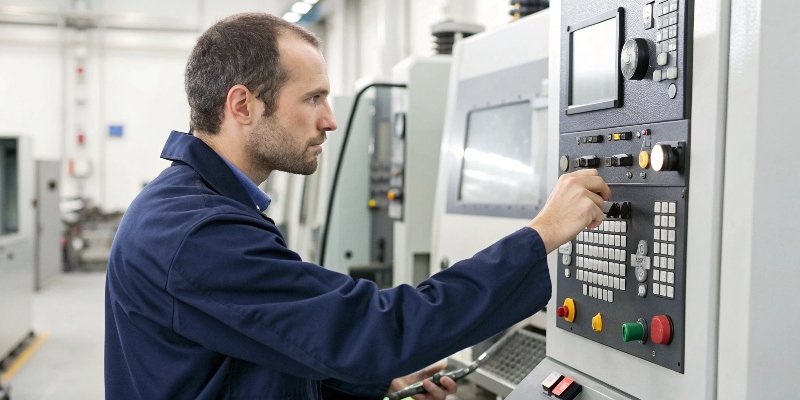
While the term might be borrowed from another field, the principle it represents is critical in high-precision manufacturing. Low-stress grinding isn’t an automated, push-button process. It is a delicate balance of machine, abrasive, and operator skill. The "training" part is about developing an expert technician who understands every variable. Here at our facility, training our team is a continuous process. We focus on several key areas. First is machine setup, including tasks like balancing the spindle and ensuring the hydrostatic bearings are functioning perfectly to dampen vibration. Second is parameter control, where the operator must master the relationship between feed rate, depth of cut, wheel speed, and coolant application. Third, and most critical from our perspective, is abrasive selection. An operator must know when to use a CBN wheel versus a diamond wheel, and which bond and grit size will give the best result without generating heat. This knowledge is what truly minimizes stress in the part and is the core of what "low-stress training" really means for us.
What is rough grinding?
Need to remove a lot of material before the finishing stage? You might worry about going too fast and causing damage. Rough grinding is the essential first step that solves this.
Rough grinding, also known as stock removal grinding, is the initial phase of the grinding process. It focuses on removing large amounts of material quickly to bring a workpiece close to its final shape. Priority is on speed, not surface finish.
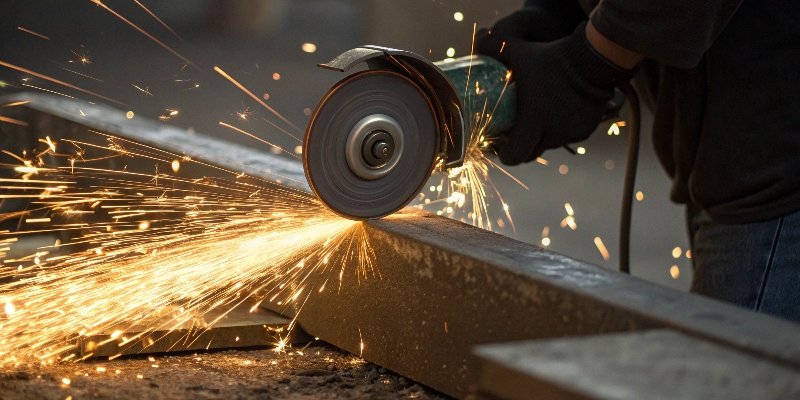
Rough grinding and finish grinding are two distinct stages of a complete process. Think of it like using sandpaper on wood; you start with a coarse grit before moving to a fine one. In our world, the same logic applies. For rough grinding4, the goal is efficiency. We use conventional abrasives with coarser grits, like our corundum or silicon carbide wheels, to hog out material. The parameters are aggressive: a deep cut, a fast feed rate, and less concern for the resulting surface finish.
| Feature | Rough Grinding | Finish Grinding (e.g., Low Stress) |
|---|---|---|
| Primary Goal | High material removal rate | High surface quality & dimensional accuracy |
| Abrasive Grit | Coarse (e.g., 24-60 grit) | Fine (e.g., 120 grit and finer) |
| Abrasive Type | Corundum, Silicon Carbide | Diamond, CBN |
| Depth of Cut | Deep | Shallow |
| Resulting Stress | High | Low to non-existent |
Rough grinding clears the path for the precision work of low-stress grinding. Your process needs both, and as a supplier of a full range of abrasives, we support our clients from the first rough cut to the final mirror polish5.
What is creep grinding?
Tired of the slow, multi-pass process of conventional grinding? This inefficiency costs you time and money on every part. Creep-feed grinding can machine a full profile in a single pass.
Creep-feed grinding is a high-productivity surface grinding method that uses a very deep cut combined with a very slow table feed rate. This allows it to machine a complete form into a workpiece in a single pass, drastically reducing cycle time.
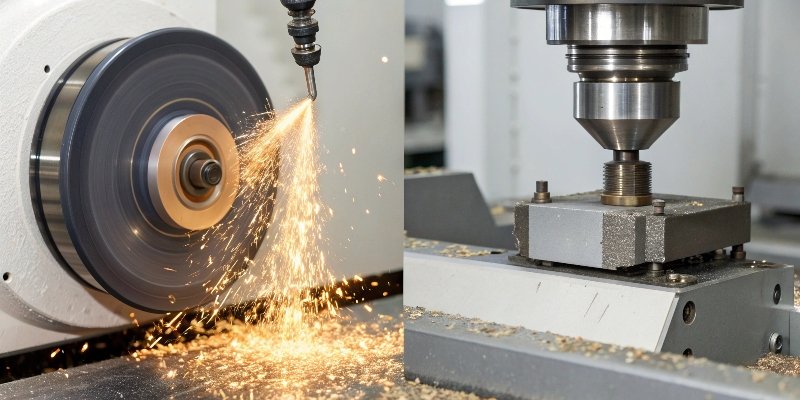
Creep-feed grinding is all about maximizing efficiency. Where conventional surface grinding takes many light passes at a high speed, creep-feed does the opposite. It can take a depth of cut of several millimeters at once, which is hundreds of times deeper than a normal pass. To compensate, the table speed is slowed to a crawl—hence the name "creep." This technique is incredibly effective for creating complex profiles, like the fir-tree roots on turbine blades. However, this aggressive process generates a tremendous amount of heat and chips in a very small contact zone. To make it work, you need two things: a specially designed abrasive wheel and a high-pressure coolant system6. The wheel must be very porous to allow coolant in and carry chips away. We manufacture RL brand wheels specifically for this, with open structures that prevent loading and burning. The coolant acts less as a temperature control and more as a high-pressure jet to blast chips out of the grinding zone. When controlled properly, creep-feed grinding7 can produce excellent parts efficiently, but it must be managed carefully to avoid thermal damage8.
Conclusion
Understanding these grinding methods helps you choose the right process and tools. For expert guidance and a reliable supply of any grinding abrasive you need, our team is always here.
-
Explore various grinding methods and their applications in modern manufacturing. ↩
-
Discover the benefits of rotary tables in grinding and their impact on production efficiency. ↩
-
Learn how reciprocating tables work and their advantages in specific grinding applications. ↩
-
Discover the role of rough grinding in the manufacturing process and its benefits. ↩
-
Discover the techniques used to achieve a mirror-like finish in grinding operations. ↩
-
Learn about the role of high-pressure coolant systems in enhancing grinding performance. ↩
-
Explore how creep-feed grinding improves efficiency and reduces cycle time in production. ↩
-
Understand the risks of thermal damage and how to prevent it during grinding. ↩
Written by
leeon
You may also be interested in:
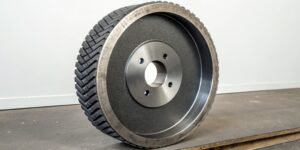
What's the application of CBN Wheels?
Struggling with grinding hard steels? Frequent wheel changes and poor finishes can hurt your bottom line. We have found that CBN wheels provide the durability
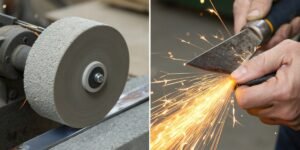
What is the difference between grinding and honing a blade?
A dull blade is a frustrating problem. It slows down production and ruins your workpiece. Using the wrong technique to fix it can cause permanent
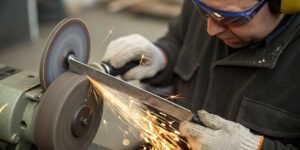
How to sharpen a knife on a bench grinder?
Is your dull knife slowing you down? A bench grinder seems like a quick fix, but you’re worried about ruining the blade. You need a
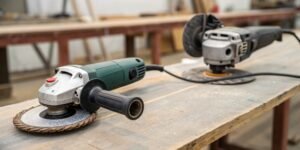
Can you use an angle grinder as a sander?
Your sanding project is tough, and your regular sander is not powerful enough. You look at your angle grinder. It has the power, but is
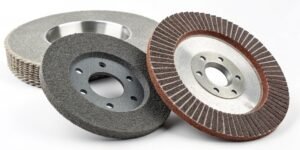
How to judge the quality of a grinding wheel?
Choosing the wrong wheel wastes money and ruins parts. Poor quality leads to downtime and rejection. A few key checks can guarantee you pick the
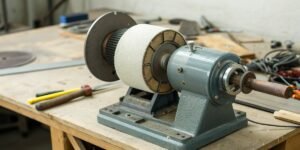
The rotor in my reluctance motored bench grinder won't spin?
Your bench grinder is humming, but the wheel isn’t moving. This frustrating problem can stop your work dead. It’s a common issue, and the fix
